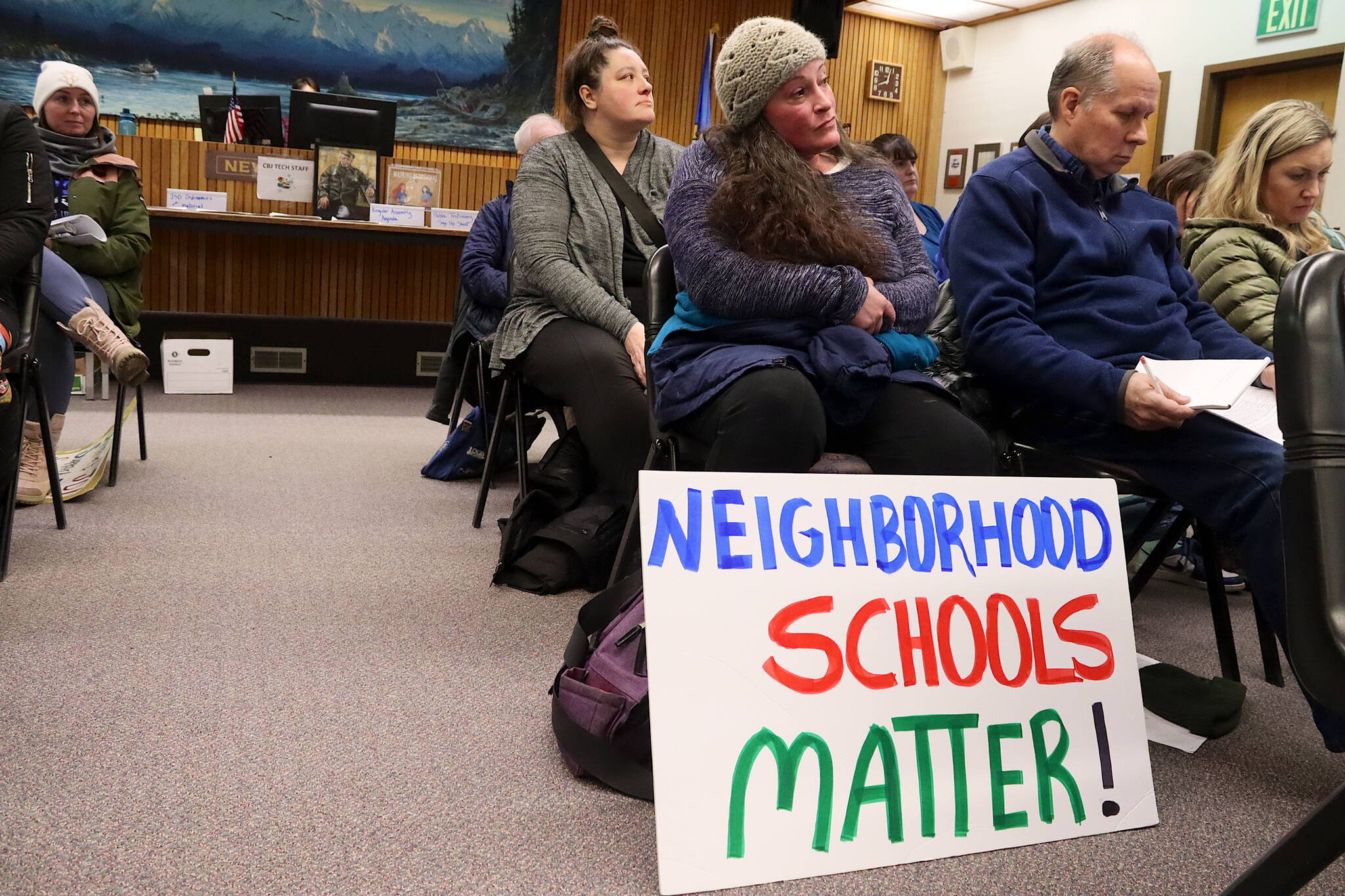A $9.7 million bailout package to ensure the Juneau School District overcomes a nearly $8 million projected deficit this year and provides help toward resolving a projected deficit of nearly $10 million next year was approved Monday by the Juneau Assembly.
The package, consisting of a loan and taking over some “non-instructional costs,” got final approval after several weeks of consideration by city and school leaders. But the unanimous Assembly vote approving the assistance was preceded by numerous residents offering public testimony generally expressing dissatisfaction with a consolidation plan the school board has approved to help balance the district’s budget.
The City and Borough of Juneau’s assistance is in the form of three ordinances, all of which begin by stating “in 2024 the Juneau School District suddenly discovered a current year structural deficit of approximately $9.5 million dollars as a result of years of insufficient state funding, over projecting enrollment, and financial mismanagement.” The expected deficit for the current fiscal year ending June 30 has been reduced somewhat, in part due to short-term budget cuts such as a hiring freeze.
However, the district is also facing a sizeable ongoing year-to-year deficit which has resulted in the restructuring plan scheduled to take effect during the coming school year. It consolidates students in grades 9-12 at Juneau-Douglas High School: Yadaa.at Kalé, grades 7-8 and the HomeBRIDGE program at Thunder Mountain High School, and adds sixth-graders to the current K-5 elementary school system.
Even with the consolidation, the district will have a multimillion shortfall. That means a likely combination of city assistance, further budget cuts such as layoffs and a hoped-for increase in per-student education funding will be needed to balance the budget.
Specifically, the ordinances provide the district:
• An interest-free loan of up to $4.1 million dollars, due within five years. The district is not required to begin repaying the loan until fiscal 2026.
• Up to $3,922,787 during the current fiscal year, based on the actual amount necessary for the district to have a balanced budget, for non-instructional costs. In practical terms, that mean CBJ will take over some “shared costs” of facilities used by both CBJ and the district for non-classroom purposes such as sports and cultural programs.
• Up to $1,650,405 for non-instructional costs during the next fiscal year that begins July 1. Assembly members have stated they will consider a higher level of funding for that year — and thus likely future years — once the school board submits its proposed budget plan later this month.
A key — yet unknown — element of the district’s budget for the coming year and beyond is the amount of state funding provided through the Base Student Allocation, which has remained largely flat for the past decade. An increase of $680 to the permanent $5,960 BSA passed the Alaska Legislature by a 56-3 vote, but Gov. Mike Dunleavy has said he will veto the bill unless additional legislation addressing his education policy goals is passed by the signing deadline next week.
A $680 BSA increase would provide the district with about $5.2 million and, with the assistance already approved by the city and the consolidation plan, result in something close to a balanced budget. However, due to the uncertainty, District Superintendent Frank Hauser told Assembly members district leaders are drafting next year’s budget on the assumption no BSA increase will occur.
The district is required to submit its budget to the Assembly by March 15 — and it must be approved beforehand by the state Department of Education and Early Development, which has granted the district an exemption from normal policy by allowing a five-year period to resolve its financial crisis.
Among the questions asked by Assembly members Monday is whether cuts made now to staff and/or programs are reversible if a BSA increase is approved.
“Can the actions that you all will need to do to fill a deficit of this size be undone?” Assembly member Christine Woll asked.
Hauser said districts have in recent years been subject to situations where varying levels of additional state funding were approved after budgets were passed and adjustments have been possible.
“If we know with certainty that funding is there then we can start bringing back staff to support our students, making sure that we’re expanding those programs, making sure that those opportunities are still there for students,” he said. “And so this unfortunately has been a practice that districts have gotten good at, which is just sad.”
Many of the people testifying at Monday’s meeting said they disagree with the consolidation of Juneau’s two high schools since they have distinctively different cultures and features, and instead keeping both open for students in grades 7-12. However other residents disagreed with the approach and emphasized quick action is necessary now to prevent worse impacts from the crisis if the district delays action beyond established deadlines.
• Contact Mark Sabbatini at mark.sabbatini@juneauempire.com or (907) 957-2306.

